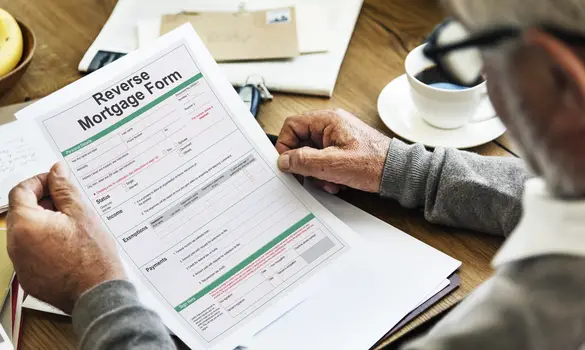
Television commercials and print advertisements are constantly pushing reverse mortgages on senior citizens. These advertisements speak highly on providing seniors the dream retirement they have always wished for. Unfortunately, there are several pitfalls associated with accepting a reverse mortgage, even when offered from the best reverse mortgage company. As a financial expert, you are likely already aware of many of these pitfalls. Accepting reverse mortgages can have significant consequences for the recipients and eventually their heir’s inheritance. From hidden stipulations to additional fees, there are several disadvantages to agreeing to the terms of a reverse mortgage. Continue reading to learn how reverse mortgage pitfalls are hurting homeowners and their heirs.
Deducts Heirs Inheritance
The most significant pitfall of reverse mortgages is that they deduct the heir’s of borrowers inheritance. Reverse mortgages are designed to provide senior citizens monthly payment in exchange for equity on their property. Because of this, by the time the mortgage recipient dies, they have no owned property to pass on to the heir’s. This takes away a significant debt-free asset for mortgage recipients to pass on to their family. In other words, this greatly reduces the amount of money that these mortgage holders are able to pass on to their children or grand kids one day. A major pitfall of reverse mortgages is how they deduct heirs inheritance.
May Not Cover Costs
Reverse mortgage payments may additionally not be sufficient to cover costs. Reverse mortgages themselves incur an additional interest rate, as well as pre-set loan period. Typically, reverse mortgages are set in periods of 25 years, and have interest rates ranging from three to seven-percent. Depending on the loan amount, these interest payments often accumulate to be more than the original lump sum of the loan. That being said, it requires mortgage recipients have another source of income simply to pay for loan until maturity. They are unable to make interest payments using their reverse mortgage payments alone. In many cases, reverse mortgages payments amount to less than associated loan costs.
Forces You To Maintain Residence
Reverse mortgages additionally require senior citizens to maintain their primary residence. This is often problematic for a number of reasons. Many seniors require frequent medical attention or assisted living services. Other seniors wish to spend their retired years traveling and vacationing. However, mortgage requirements prohibit recipients from living anywhere else for more than a year. If they do not return to their mortgaged home within a year, the entire mortgage immediately becomes due. Payments can only be made when the home qualifies as the recipient’s primary residence. To additionally prove this, borrowers must annually certify that they are indeed staying in their primary residence. Senior citizens are forced to maintain their primary residence in accepting the terms of a reverse mortgage.
Charge Additional Fees
There are also many additional fees that are associated with accepting a reverse mortgage. Many lenders impose origination fees on mortgage recipients. These fees range anywhere from one to two-percent, and must be paid upfront to mortgage brokers. There are also mortgage insurance premium fees. Initial insurance premium fees are roughly two-percent upfront, and then followed by annual interest premiums at a lower rate. Furthermore, lenders also charge closing costs on reverse mortgages. Closing costs are developed to cover various credit screenings, processing fees, and appraisal services. On top of interest payments for long periods, reverse mortgage lenders charge additional fees as well.
Don’t Receive Market Value
Reverse mortgage lenders additionally offer mortgages far below market value. Since lenders have to wait up to 25 years to claim their actual property investment, mortgage values are incredibly low. In many cases, borrowers are offered less than 40 to 50 percent of their home’s market value. Low values allow interest payments to quickly add up, and payments to exceed the value of the loan quickly. Because of this, mortgage payments have been completed while interest payments are still required. A major pitfall of reverse mortgages is they do not provide borrowers with fair market value.
Reverse mortgages are constantly targeting senior citizens to refinance their homes. However, there are several pitfalls associated with accepting reverse mortgage terms. Reverse mortgages devalue borrowers heir’s inheritance. The payments provided may not be enough to cover costs. Mortgage requirements force senior citizens to maintain a primary residence. Moreover, lenders impose additional fees on borrowers, many of which have to be paid upfront. Furthermore, due to the period of the loan, borrowers always receive far less than market value when seeking a reverse mortgage. To best protect their assets, borrowers should ask several questions before applying for a reverse mortgage. Follow this post in order to understand how reverse mortgage pitfalls are hurting home owners and their heirs.
 Business First Family Business, Accounting, Finance, Investing, Marketing And Management
Business First Family Business, Accounting, Finance, Investing, Marketing And Management